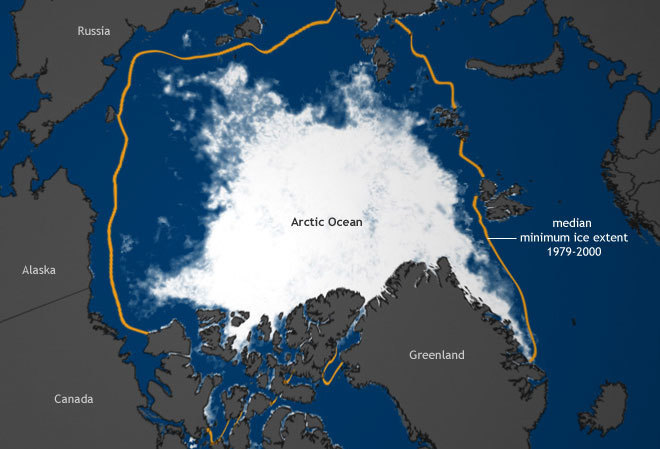Following talks I’ve given on global warming, it’s not uncommon – at least in the U.S. – to be confronted by someone who views the subject with suspicion. One such occasion sticks in my mind.
After doing my best to explain the reality of global warming and the science that points to a human fingerprint, someone asked if there was “one thing” I could say that would convince her it isn’t a hoax. Although I thought I had already made the case, I attempted to respond before realizing there was “nothing” I could say that would convince her. Her views were set in stone. When I asked what informed her thoughts, she had no response.
That and other similar interactions nag at me. Given one, and only one opportunity to convince others that global warming is real, what could I say? Temperatures are rising, as are sea levels, but not in dramatic ways that would grab the average person’s attention. But is there something that’s changing so fast that people have to take notice? The answer is “yes,” and it involves the ice that blankets much of the Arctic Ocean.
The extent of Arctic sea ice varies over the course of a year. Following melting that accompanies spring and summer warming, minimum coverage typically occurs in September. In contrast, following freezing that accompanies the colder fall and winter months, maximum coverage occurs in March. And so it goes. Yearly, the natural flow of things takes the sea ice from a late winter maximum to a late summer minimum. But what’s not natural is the degree to which both the summer minimum and the winter maximum have been changing.
Accurate records of Arctic sea ice have been obtained since the advent of satellite observations in 1979, and the figure, which compares the summer minimum recorded on September 6, 2011 (the white mass) with the median value of the boundary for the same date from 1979 to 2000 (the orange line), reveals significant shrinkage. In 1980, for example, the summer minimum covered 2.71 million square miles of the Arctic Ocean. In 2011 it was down to 1.44 million square miles, and in 2012 it dropped to a record setting 1.12 million square miles. The extent of the shrinkage is large and extends to other times of the year. On March 24 of this year, the winter maximum peaked at 5.607 million square miles, a new record low, and on November 19, the extent of Arctic sea ice was 386,000 square miles smaller than on the same date for the prior record year of 2012.
With temperatures increasing at a rate that’s twice the global average, the Arctic has become a poster child for global warming. And, undeniably, the cause is human greenhouse gas emissions, of which carbon dioxide (CO2) is the principal contributor. This has been confirmed by a number of studies, most recently by one that examined September sea ice data over a 30-year period and found shrinkage to occur in concert with CO2 emissions. In fact, a linear relationship provided the best correlation of the data, with emission of one metric ton (1,000 kilograms) of CO2corresponding to the loss of about 3 square meters (about 32 square feet) of ice. Arctic sea ice is shrinking dramatically, and it’s happening because of human greenhouse gas emissions. Moving forward, if current emissions were to hold and the linear trend were to continue − a big if − the Arctic Ocean would be free of summer ice by 2045.
If the foregoing doesn’t grab your attention, let’s take the discussion a step further by making it personal. In 2013, average U.S. per capita CO2 emissions amounted to 16.3 metric tons. Yes, hard to believe! On average, we were each responsible for discharging 36,000 pounds of CO2 into the atmosphere and correspondingly for the loss of 49 square meters (527 square feet) of ice. That’s twice the contribution of the average Chinese or European. Were current trends to continue through 2045, the average American would have added about a third of an acre to the disappearance of summer sea ice.
What we do matters!
